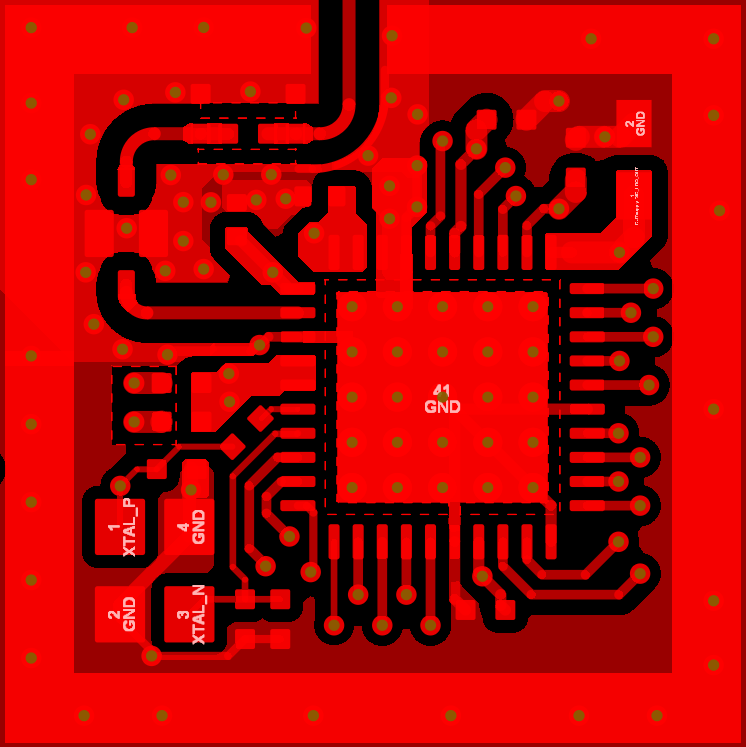SWRU612 December 2023 CC3300 , CC3301 , CC3301MOD , CC3351
- 1
- Abstract
- Trademarks
- 1Introduction
-
2Schematic Considerations
- 2.1 Schematic Reference Design
- 2.2 Power Supply
- 2.3 Clock Source
- 2.4 Radio Frequency (RF)
- 2.5 Digital Interfaces
- 3Layout Considerations
3.2 IC Thermal Pad
Underneath the IC, there should be one continuous ground plane on the top layer with 25 vias evenly distributed as shown in the Figure 3-7. This is important for thermal dissipation and optimal RF performance.
Figure 3-7 is sampled from the CC330x reference design files.
 Figure 3-7 Reference Design Thermal
Pad
Figure 3-7 Reference Design Thermal
Pad